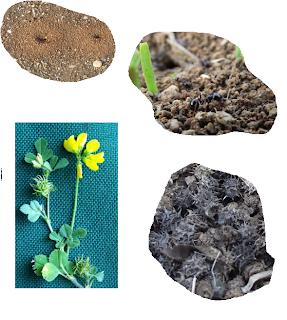We emerge onto the cliff
path with our view of the sea at first obscured by woody bushes of juniper and
lentisc much favoured by small passerine birds. This morning I see that we have
house sparrows in abundance as well as the occasional stonechat and Sardinian
warbler.
Apart from providing a
food source for the birds juniper berries are also used by ourselves to flavour
gin and the lentisc bush, also known as mastic, provides us with a resin which
puts the “chew” in chewing gum (so if you’re chewing gum as you read this then
this is the bush that you may well be masticating at this moment).
Looking away from the
birds and berries for a moment and casting a glance down at the track I spot a
couple of dark green plants making their first appearance. These puzzled me for
years for I never once saw them in flower. The reason being, as I found out by
marking where they appeared and continuing to observe them, is that the leaves
appear in winter, die down in the spring and the flowers start to appear in
late summer so you never see the leaves and flowers together. The plant is in fact a highly toxic plant
called a Sea Squill.
And here close by are
some holes in the ground surrounded by little mounds of earth. Closer
examination reveals that this is the work of a fascinating little creature
called the Harvester Ant. Beneath the ground they are constructing numerous
tunnels leading to large granaries in which they will store quantities of seeds
later in the year. These will provide food for the next generation but, as not
all of the seeds will be eaten, the ants provide the method of seed dispersal
for the plant. These particular ants here, as I know from experience, have a
particular preference for the spiny seeds of the medick, so come the spring
this area will be a carpet of tiny golden yellow flowers. This is just one of
the many connections in nature which I find so captivating and which makes the
living world such a fascinating subject to study.
But that’s enough time on my knees for now so let us sit on
the bench and watch the sun coming up over the Mediterranean Sea. Do you know
that if you sail south from here then your next landfall would be the North
African coast?
More on Sea Squills and Harvester Ants in Steve's Facebook Naturalists Group
GO TO NEXT BLOG The Lost Garden
***********************************************************************************
LINKS:
LINKS:






No comments:
Post a Comment